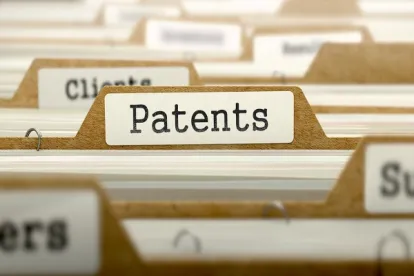On March 11, 2021, the Federal Circuit issued a precedential decision in In re PTAB of Trustees of the Leland Stanford Junior University affirming a decision by the Patent Trial and Appeal Board (PTAB) to maintain the examiner’s rejection of claims involving analysis of genetic data to determine inheritance. The Federal Circuit found that the claims at issue were indeed directed to patent ineligible subject matter. This case demonstrates the difficulties of obtaining medical diagnostic claims, but also highlights that a potential path forward may have been possible with disclosure of specific treatment regimens in the specification.
The Application at Issue
Application Serial No. 13/445,925 — the ’925 application, for short — was directed to methods of haplotype phasing. Haplotype phasing is a process for determining which genetic alleles in a patient were inherited from each parent.
Claim 1 of the ’925 application reads, in pertinent part, as follows:
- A method for resolving haplotype phase, comprising:
receiving allele data describing allele information regarding genotypes for a family … and storing the allele data on a computer system comprising a processor and a memory;
receiving pedigree data for the family … and storing the pedigree data on a computer system comprising a processor and a memory;
determining an inheritance state for the allele information … using a Hidden Markov Model having hidden states implemented on a computer system comprising a processor and a memory,
wherein the hidden states comprise inheritance states, a compression fixed error state, and a[ Mendelian inheritance error]- rich fixed error state,
wherein the inheritance states … ;
receiving transition probability data describing transition probabilities for inheritance states and storing the transition probability data on a computer system comprising a processor and a memory;
receiving population linkage disequilibrium data and storing the population disequilibrium data on a computer system comprising a processor and a memory;
determining a haplotype phase …using a computer system comprising a processor and a memory;
storing the haplotype phase … using a computer system comprising a processor and a memory; and
providing the stored haplotype … using a computer system comprising a processor and a memory.
The PTAB’s Assessment and Decision
The ’925 stood rejected by the patent examiner under 35 U.S.C. §101 as being directed to patent ineligible subject matter. The PTAB utilized the two-step analysis established by Alice Corp. Pty. Ltd. V. CLS Bank Int’l, 573 U.S. 208 (2014). In step one of the Alice inquiry, the PTAB determined that the steps of representative claim 1 were directed to “mental steps of receiving, storing, or providing information” or “mathematical concepts.” The PTAB specifically found that the claims do not improve computer technology but rather use off-the-shelf computing equipment to perform an improved mathematical analysis.
In step two of the Alice inquiry, the PTAB concluded that the claims did not provide an inventive concept that transforms the abstract idea into patent eligible subject matter. While the patent claims may provide a valuable contribution to science, the PTAB held that is not enough to rise beyond patent ineligible mental processes and mathematical operations. Even in claims 9 and 19, which recited steps culminating in a final step of “providing the drug for treatment,” the PTAB found the claims “are not directed to a specific method of treatment, do not identify specific patients, do not recite a specific compound, do not prescribe particular doses, and do not identify the resulting outcome.” The PTAB distinguished these claims from the patent eligible claims in Vanda Pharmaceuticals Inc. v. West-Ward Pharmaceuticals International Ltd., 887 F.3d 1117 (Fed. Cir. 2018), where claims were directed to a “specific method of treatment for specific patients using a specific compound at specific doses to achieve a specific outcome.”
The Federal Circuit’s Assessment and Decision
The Federal Circuit reached the same conclusions as the PTAB, by also using the two-step Alice test.
Regarding step one, the ’925 application disclosed that prior methods “may be able to provide long-range haplotype phasing for approximately 80% of heterozygous positions, the method of the present invention provides accurate, long-range phasing at 97.9% of all heterozygous positions.” The Federal Circuit stated that, “even accepting the argument that the claimed process results in improved data, we are not persuaded that claim 1 is not directed to an abstract mathematical calculation.”
Regarding step two, the “written description makes clear that the mathematical steps performed, and the types of data received, as claimed, are conventional and well understood in the prior art.” The Court found that “a specific or different combination of mathematical steps yields a greater number of haplotype predictions than previously achievable under the prior art is not enough to transform claim 1 into a patent eligible application.” Further, the “alleged innovation accomplished in claim 1 is in the mathematical analysis itself.” The Court concluded that the remaining claims contained limitations drawn to non-specific determinations of a “diagnosis,” “drug treatment,” and “prognosis” based on the haplotype calculation.
Takeaways
This case suggests that, had the independent claims included limitations for specific diagnosis, drug treatments and prognosis based on the data manipulation, the claims may have been considered to be patent eligible subject matter. The case demonstrates the need to include disclosure of specifics of treatment regimens, including therapeutics and dosing supported by a variety of examples and citations of literature describing such regimens.
While subject matter eligibility remains an area of patent law that continually is changing, the area may see further change when the Supreme Court considers American Axle & Mfg. v. Neapco Holdings, a case where the Court has granted certiorari and has been asked to reconsider the standard for determining whether a patent claim is “directed to” a patent-ineligible concept under step 1 of the Alice framework.




 />i
/>i


